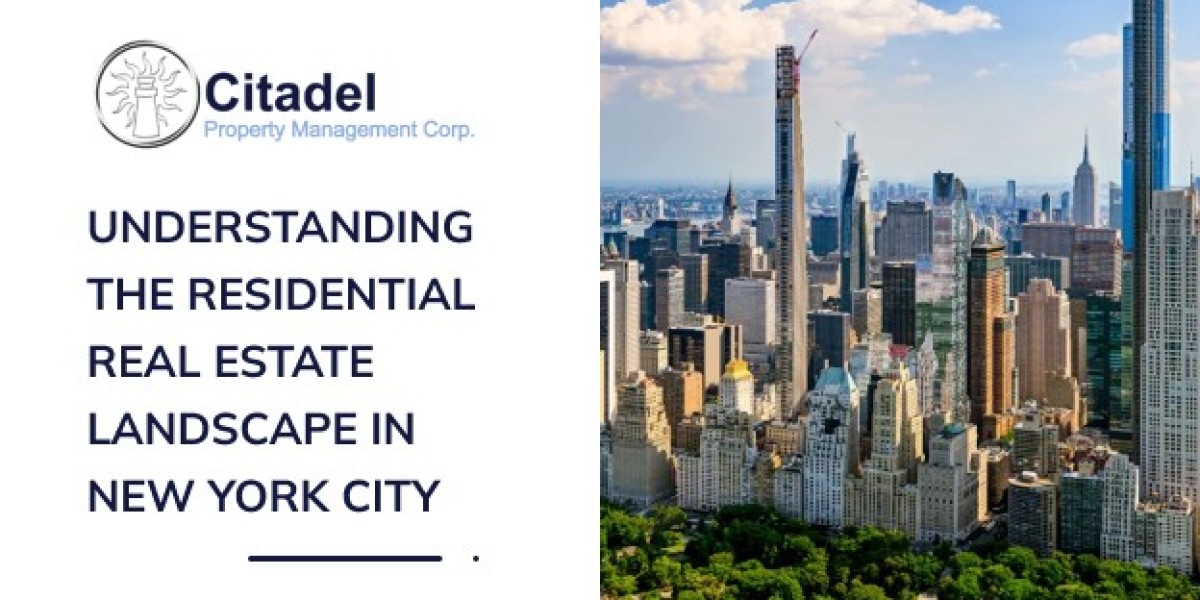NYC has a comprehensive residential real estate market. Here, you can find a variety of properties like apartments, condos, co-ops, and single-family houses that cater to the needs of different individuals. Here, the market price of the residential property keeps fluctuating. At present, the median listing price of a home is $850k, with an average price per sq. ft. of $903.
To make a sound financial decision, one needs to thoroughly understand the residential real estate landscape of NYC. It has various crucial aspects. Let’s go through them one by one!
The Unique Structure of NYC’s Residential Market
The NYC residential market is characterized by its diverse property types and ownership models:
1. Co-ops and Condos
Co-ops, where buyers purchase shares in a corporation that owns the building, are common, especially in Manhattan. Condos, offering outright ownership of a unit, are popular among investors due to fewer restrictions.
2. Rental Apartments
NYC’s rental market caters to a broad demographic, from high-income earners in luxury developments to low- and middle-income households in rent-stabilized or subsidized housing.
3. Single-Family Homes
Predominantly found in outer boroughs like Staten Island, Queens, and parts of Brooklyn, these homes attract families seeking suburban-style living.
4. Luxury Developments
High-rise condos and rentals with state-of-the-art amenities dominate Manhattan and parts of Brooklyn, reflecting the city’s global appeal.
Key Drivers of Demand in New York City’s Residential Market
Demand in NYC’s residential real estate market is influenced by several factors:
Population Growth: With over 8 million residents, NYC remains a magnet for people seeking employment, education, and cultural opportunities. This sustained demand drives the need for diverse housing options.
Economic Opportunities: As a global financial hub, NYC attracts professionals, entrepreneurs, and students, bolstering demand for both rentals and purchases.
Cultural Appeal: NYC’s vibrant cultural scene, renowned educational institutions, and iconic landmarks make it a desirable location for both domestic and international buyers.
Trends Shaping NYC’s Residential Real Estate
A number of trends are shaping NYC’s residential real estate market and giving it new dynamics. Some of them are:
Post-Pandemic Shifts: The COVID-19 pandemic reshaped residential preferences, with increased interest in spacious homes, outdoor amenities, and properties in outer boroughs. Work-from-home trends have also influenced housing choices.
Luxury Housing Boom: High-end developments continue to dominate new construction, particularly in Manhattan and parts of Brooklyn, catering to affluent buyers and investors.
Affordability Challenges: Rising property values and rents have spotlighted the city’s affordability crisis, with increased demand for rent-stabilized units and affordable housing initiatives.
Sustainability and Green Living: Eco-friendly buildings with LEED certifications and energy-efficient designs are increasingly sought after by environmentally conscious buyers and tenants.
Technology Integration: Smart home technology and virtual property tours are becoming standard, enhancing the tenant and buyer experience.
Navigating NYC’s Rental Market
The rental market in NYC is among the most competitive in the country. Here, high demand often leads to bidding wars for rentals, especially in prime neighborhoods like Williamsburg, Tribeca, and Upper West Side. Besides, the market tends to peak during the summer months when students and new professionals move to the city.
Investment Opportunities in NYC’s Residential Market
There are numerous investment opportunities in the NYC market like:
Luxury Properties:
While they require significant capital, luxury condos and rentals in prime locations offer high returns, particularly for long-term investors.
Outer Boroughs:
Neighborhoods in Queens, Staten Island, and parts of the Bronx are gaining traction due to their relatively lower prices and rising demand for spacious homes.
Multi-Family Properties:
Investing in multi-family buildings provides consistent rental income and benefits from NYC’s high occupancy rates.
Affordable Housing Projects:
Developers can leverage tax incentives and grants by investing in affordable housing, addressing a critical need in the city.
Tips for Residential Real Estate Buyers and Renters in NYC
Each NYC neighborhood has its unique character, amenities, and price points. Researching the vibe, accessibility, and proximity to schools, workplaces, or cultural spots can help narrow your choices. Consider safety, public transport options, and community aspects to find a location that aligns with your lifestyle.
1. Set a Realistic Budget
Determine your budget, accounting for down payments, monthly mortgage or rent, maintenance costs, and potential fees like brokers’ commissions. NYC’s market often demands flexibility, but staying within a defined budget prevents overextension. Renters should also consider credit score requirements.
2. Secure Financing in Advance
For buyers, getting pre-approved for a mortgage is essential in NYC’s competitive market. Pre-approval strengthens your position during negotiations. Renters should gather necessary documents like proof of income and reference to streamline the application process.
3. Work with a Real Estate Professional
Engaging a knowledgeable agent can save time and offer insights into market trends. Professionals can negotiate on your behalf, navigate complex paperwork, and identify properties matching your criteria, making the process smoother and more efficient.
4. Visit Properties in Person
While virtual tours are convenient, visiting properties in person helps you assess details like layout, natural light, and potential maintenance issues. It also provides an opportunity to explore the neighborhood firsthand.
5. Understand Legal and Lease Terms
Buyers should familiarize themselves with NYC-specific regulations like co-op board approvals and property taxes. Renters must carefully review lease terms, including subletting policies and utility responsibilities, to avoid misunderstandings.
6. Time Your Move Strategically
The NYC market is seasonal, with peak activity in the summer. Renters can find better deals in winter, while buyers may benefit from fewer competing bids in slower months.
Find the Best Residential Real Estate Opportunities for You!
New York City’s residential real estate landscape is diverse, dynamic, and competitive, offering many opportunities for buyers, renters, and investors. Understanding the market’s trends, from pricing to neighborhood characteristics, is essential for making informed decisions. Whether purchasing a luxury condo or renting a modest apartment, strategic planning and market insight are crucial for success in this vibrant city.
To find the best residential real estate opportunities in the NYC dynamic market, you can partner with Citadel Property Management Corp. From tenant screening to legal compliance, their expertise reduces risks, maximizes income, and provides peace of mind, allowing you to focus on other investments or personal priorities.
Frequently Asked Questions
1. What factors affect property prices in NYC?
Location, proximity to public transport, amenities, property type, and neighborhood demand all influence prices.
2. How is the residential market different in each borough of NYC?
Manhattan has the highest property prices, followed by Brooklyn, while Queens, the Bronx, and Staten Island offer more affordable options.
3. What are the most expensive neighborhoods in NYC?
Neighborhoods like Tribeca, SoHo, the Upper East Side, and Central Park South in Manhattan are some of the priciest areas.
4. What are the most common types of residential properties to buy in NYC?
Condos and co-ops are the most common types, though single-family homes and multi-family buildings are also available.









